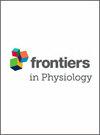Circular RNA expression in turkey skeletal muscle satellite cells is significantly altered by thermal challenge
IF 3.2
3区 医学
Q2 PHYSIOLOGY
引用次数: 0
Abstract
IntroductionUnderstanding the genetic mechanisms behind muscle growth and development is crucial for improving the efficiency of animal protein production. Recent poultry studies have identified genes related to muscle development and explored how environmental stressors, such as temperature extremes, affect protein production and meat quality. Non-coding RNAs, including circular RNAs (circRNAs), play crucial roles in modulating gene expression and regulating the translation of mRNAs into proteins. This study examined circRNA expression in turkey skeletal muscle stem cells under thermal stress. The objectives were to identify and quantify circRNAs, assess circRNA abundance following RNAse R depletion, identify differentially expressed circRNAs (DECs), and predict potential microRNA (miRNA) targets for DECs and their associated genes.Materials and methodsCultured cells from two genetic lines (Nicholas commercial turkey and The Ohio State Random Bred Control 2) under three thermal treatments: cold (33°C), control (38°C), and hot (43°C) were compared at both the proliferation and differentiation stages. CircRNA prediction and differential expression and splicing analyses were conducted using the CIRIquant pipeline for both the untreated and RNase R depletion treated libraries. Predicted interactions between DECs and miRNAs, as well as the potential impact of circRNA secondary structure on these interactions, were investigated.ResultsA total of 11,125 circRNAs were predicted within the treatment groups, between both untreated and RNase R treated libraries. Differential expression analyses indicated that circRNA expression was significantly altered by thermal treatments and the genetic background of the stem cells. A total of 140 DECs were identified across the treatment comparisons. In general, more DECs within temperature treatment comparisons were identified in the proliferation stage and more DECs within genetic line comparisons were identified in the differentiation stage.DiscussionThis study highlights the significant impact of environmental stressors on non-coding RNAs and their role in gene regulation. Elucidating the role of non-coding RNAs in gene regulation can help further our understanding of muscle development and poultry production, underscoring the broader implications of this research for enhancing animal protein production efficiency.火鸡骨骼肌卫星细胞中环状 RNA 的表达因热挑战而发生显著变化
引言 了解肌肉生长和发育背后的遗传机制对于提高动物蛋白质生产效率至关重要。最近的家禽研究发现了与肌肉发育有关的基因,并探索了极端温度等环境应激因素如何影响蛋白质生产和肉质。包括环状 RNA(circRNA)在内的非编码 RNA 在调节基因表达和将 mRNA 翻译成蛋白质的过程中起着至关重要的作用。本研究考察了热应激下火鸡骨骼肌干细胞中循环 RNA 的表达。材料与方法比较了两种基因系(尼古拉斯商业火鸡和俄亥俄州随机培育对照2)的培养细胞在三种热处理条件下的增殖和分化阶段:低温(33°C)、对照(38°C)和高温(43°C)。使用 CIRIquant 管道对未处理文库和 RNase R 贫化处理文库进行了 CircRNA 预测以及差异表达和剪接分析。结果 在处理组中,未处理文库和 RNase R 处理文库共预测出 11,125 个 circRNA。差异表达分析表明,干细胞的热处理和遗传背景会显著改变circRNA的表达。在不同的处理比较中,共鉴定出140个DECs。一般来说,温度处理比较中更多的DECs是在增殖阶段发现的,而遗传系比较中更多的DECs是在分化阶段发现的。阐明非编码 RNA 在基因调控中的作用有助于加深我们对肌肉发育和家禽生产的理解,并强调了该研究对提高动物蛋白质生产效率的广泛意义。
本文章由计算机程序翻译,如有差异,请以英文原文为准。
求助全文
约1分钟内获得全文
求助全文
来源期刊

Frontiers in Physiology
PHYSIOLOGY-
CiteScore
6.50
自引率
5.00%
发文量
2608
审稿时长
14 weeks
期刊介绍:
Frontiers in Physiology is a leading journal in its field, publishing rigorously peer-reviewed research on the physiology of living systems, from the subcellular and molecular domains to the intact organism, and its interaction with the environment. Field Chief Editor George E. Billman at the Ohio State University Columbus is supported by an outstanding Editorial Board of international researchers. This multidisciplinary open-access journal is at the forefront of disseminating and communicating scientific knowledge and impactful discoveries to researchers, academics, clinicians and the public worldwide.
 求助内容:
求助内容: 应助结果提醒方式:
应助结果提醒方式:


